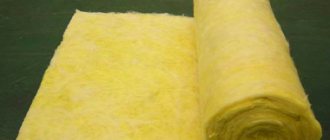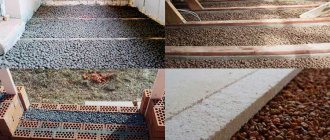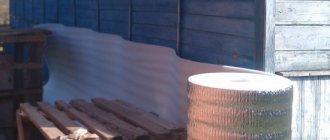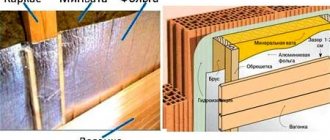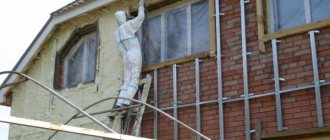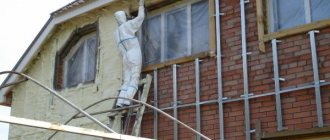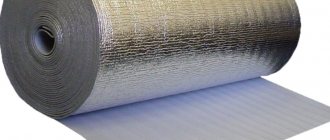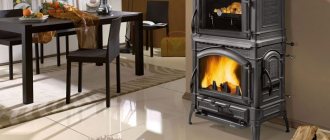In this material: positive and negative reviews about polystyrene foam when using it for home insulation. Read and comment.
Have you already insulated your house or apartment with polystyrene foam? If yes, then you probably have some experience using this material. Do you know what its pros and cons are? We invite you to leave your opinions about polystyrene foam below in the comments.
For our part, we will now make a short review of this material. And we’ll tell you what reviews we’ve come across about polystyrene foam, not only on the Internet, but also offline. And, of course, we will write our comments on each point.
Some general information about polystyrene foam
This material is obtained by foaming plastic mass. Gas makes up its bulk, so the density of the resulting material is significantly lower than the density of the polymer.
In everyday life (and not only) we often deal with expanded polystyrene (pressless). It is widely used due to its high thermal insulation properties (98% of the material is gas in small cells).
The scope of application is truly extensive: in construction for insulation of various structures, including residential buildings; for the manufacture of all kinds of containers; in instrument making for thermal insulation (for example, refrigerators), etc.
Real properties of extruded polystyrene foam
The author of these lines is familiar with the above-mentioned material firsthand. Reliable information about its characteristics was obtained in Germany, on a targeted business trip to study methods of using extruded polystyrene foam in construction. Add to this personal practical experience in using this material in the construction of country houses in the recent past (by the way, photographs of foundation insulation were taken just during my work on construction sites). Extruded polystyrene foam is an excellent thermal insulation material. Photo by the author
Positive reviews about polystyrene foam
These include the following.
Excellent thermal insulation
Almost everyone talks about this. Moreover, its thermal insulation properties are noticeably superior to some other insulation materials. Accordingly, to achieve the desired insulation, a smaller thickness of the material is required.
Attractive price
To be convinced of this, you don’t even need to read various reviews about polystyrene foam. You just have to visit some online store of building materials and everything will immediately become clear. For such a price it is hardly possible to insulate a house using any other material.
Light weight
This is an important advantage of polystyrene foam. Due to the fact that its main volume is gas, the weight of the insulating structure is small. This means that a minimum load is achieved, for example, on the foundation of a house when insulating walls.
Practicality, ease of installation
Such reviews about polystyrene foam can be found very often. Indeed, this material is easy to cut and attached to the wall and other insulated elements. Everything happens quickly and easily. A sheet of foam plastic can be easily given the desired shape - cut, trimmed, adjusted to the desired size.
All this indicates the presence of many advantages compared to other materials for similar purposes.
Now let's get to the bad stuff.
Pros:
- Excellent interaction with other types of materials, which provides multifaceted design possibilities.
- Minimum weight, which is considered convenient during installation.
- Ease of processing, which helps significantly speed up project completion.
- High air permeability, which is a necessary property for long-term service.
- The required high thermal resistance, which ensures the maintenance of high temperatures inside the home.
- Affordable price compared to other alternative options.
Negative reviews about polystyrene foam
The following points are often mentioned.
When burning, poisons are released
And I have to agree with this. Because it has been tested in practice. There are many life examples described in various media. Cases where people received serious poisoning due to toxic substances released when burning polystyrene foam. Unfortunately, there were also tragic cases.
Harmful substances are also released at low temperatures
As a rule, in such negative reviews of polystyrene foam we are talking about styrene. This is a truly harmful substance that has a negative impact on people's health.
This release is especially stimulated by the sun's rays falling on the foam. Or when it is located in warm rooms (for example, a bathhouse, a kitchen). That is, when heating occurs.
Doesn't breathe well
This is talked about quite often (both online and offline). For example, when the walls of a house are insulated with foam plastic, it becomes difficult for water vapor to escape from the premises to the outside. Some reviews say that after insulating the house with this material, the microclimate in the rooms has clearly changed - the level of humidity has increased, it has become stuffy, and there is a regular desire to open the window and ventilate the room.
Let's not argue with this. Because we tested it in our own practice - foam plastic really doesn’t “breathe” well.
That is, in essence, this material creates a vapor barrier. Yes, there are ways to combat this (for example, a good ventilation system in the house). However, this negative point must be taken into account.
Destroyed in the sun
The thing is that ultraviolet rays quickly destroy the structure of the foam and simply “eat” it. First the material turns yellow, and then begins to crumble.
However, it should be noted that it is very easy to deal with this. To prevent this from happening and to ensure that polystyrene foam lasts a long time, it must be reliably protected from exposure to sunlight. For example, when insulating the walls of a house, glue and plaster are used for this.
These are the opinions we encountered. As you can see, not only good things are said about this material, but also bad things.
High-quality insulation of walls with foam plastic from the outside with step-by-step instructions
There is not always a need for specialized equipment, but established standards and optimal technology for solving the problem must always be observed. Based on reviews of foam insulation of the exterior of the house, we can draw a simple conclusion that you need to follow a specific step-by-step action plan. Professionals consider this to be quite a labor-intensive task, so it must be approached very responsibly. The sequence of insulating walls from the outside with polystyrene foam, step by step:
- Sheets of material should be glued together in a brick pattern so that they overlap one another in the middle. Each element must be completely coated with the adhesive mixture. A special antifungal impregnation is added to this glue beforehand.
- Using a construction float, all irregularities at the joints are removed to achieve an ideal surface. Minimum size cracks must be filled with putty.
- Next, a reinforced layer is applied using facade mesh and an adhesive mixture. This allows you to achieve the desired structural strength.
- The strengthening layer is considered to be the creation of a leveling surface using the same glue.
- Then a primer is applied, which will be an excellent binding element with the next layer.
- The final design stage is the installation of a decorative layer, for example, brick-like paint, modern plaster or tile jointing.
The opinion of professionals has always been considered relevant in many areas of human activity, so it is always better to take it into account. Of course, there are cases when attitudes towards a certain topic are divided, so it is necessary to carefully and adequately analyze all statements. The complete organization of heat in a house requires the right approach, so the choice of building materials is considered an important point. Preliminary consultations and reliable information can be the key to high-quality implementation of a complex project.
Your feedback on polystyrene foam
Write them in the comments. And so that the information is well received by other readers, write your reviews like this:
- first a few words about exactly how you used this material;
- then point out the pros;
- what are the disadvantages of polystyrene foam;
- and then give an overall rating on a 5-point scale: very bad, bad, fair, good, excellent.
We look forward to your feedback on polystyrene foam. And, of course, take part in the survey. Thank you for your activity.
An example of the proper use of polystyrene foam
In modern country house construction, extruded polystyrene foam PENOPLEX® is used more and more boldly.
By the way, this brand is found more often than others on Russian construction markets. As an example, let's look at floor insulation in a house on screw piles. It is constructed according to the principle of a device above a ventilated underground, that is, not on the ground, but with some free space above ground level. The entire floor structure is mounted on beams (joists), most often wooden. One of the most important structural elements of a floor is thermal insulation, which is subject to the most stringent requirements. Firstly: it must keep warm well. Secondly, do not absorb moisture, because: water has high thermal conductivity, and if the insulation becomes saturated with moisture, it stops storing heat and begins to draw it out of the house; the ability to absorb water can cause mold and mildew. The vapor permeability of expanded polystyrene is close to zero. Photo by the author Naturally, among the many different insulation materials, you need to choose the one that harmoniously combines two important qualities. The best option is slabs made of extruded polystyrene foam PENOPLEX®. This material with a low thermal conductivity coefficient and almost zero water absorption will ensure a healthy microclimate in the lower part of the house for many decades. You should not discount such positive characteristics as biostability, environmental friendliness and durability (flawless operation for at least 50 years!).
Let's consider two options for constructing a floor in a house above screw piles. In both cases, a wooden subfloor is placed on top of the joists. PENOPLEX® slabs are laid on it in a continuous, unbroken layer. Then a vapor barrier is laid on the insulation, usually a high-quality polyethylene film, which will protect it from water vapor.
Wet and dry floor screed
The differences between the two options are determined by the finishing floor covering.
If you have cement mortar tiles, then it must be preceded by a material mixed with water - in our case, cement-sand screed. If you are laying parquet, laminate or linoleum, it is better to use a dry screed made from OSB board or other sheet materials. Various finishing options
We have considered only one way to properly use extruded polystyrene foam in summer cottages. In fact, there are many more options, because its characteristics are truly unique. It would be interesting to hear feedback from those who have experienced the quality of this material in practice.
If you are interested in ways to rationally use polystyrene foam in the dacha economy, you are welcome to familiarize yourself with the materials:
- Heating without loss: a practical and inexpensive way to insulate the base of a greenhouse
- 6 unexpected ways to use insulation in your dacha

